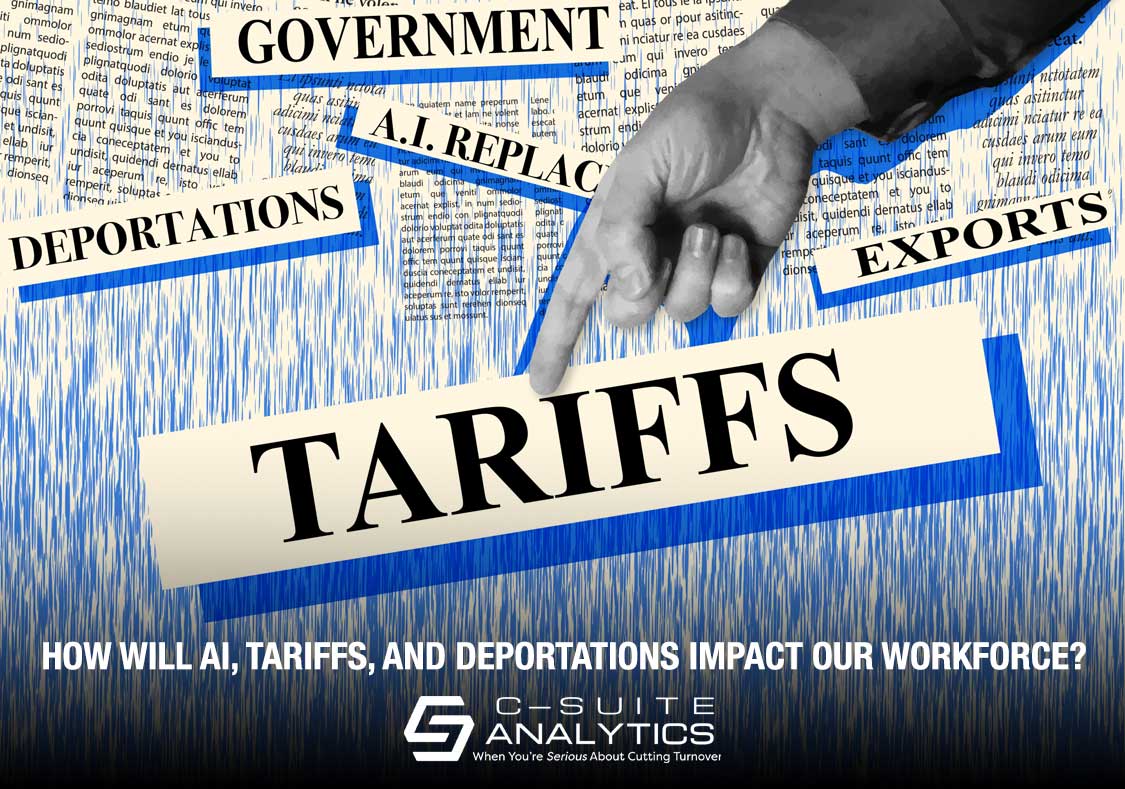AI, deportations, tariffs, and birthrate declines are reshaping America's workforce—blue- and white-collar alike. From baby boomer exits to AI disruptions, breaking down the workforce challenges no leader can afford to ignore.
Double Down On PTO To Retain Top 2%

Let’s start with our core employee retention principle, that the #1 reason employees stay or leave is how much they trust their boss. This does not mean that every time an employee quits that they didn’t trust their boss…although maybe they didn’t…but instead that our first-line supervisors are our main solution, our secret passageway, to improving retention.
Unusual Times in Retention
If you bite hard on this concept, you then must ask yourself, “What are all of the other “solutions” you are providing that are not really solutions at all?” And one that immediately pops up is employee benefits. Would a current employee actually leave what they otherwise perceive as a good job…they like their boss, colleagues, daily duties, future prospects…for less expensive health insurance or a slightly better 401 (k)? We all know the answer is no.
But these are most unusual times. Unemployment is at 3.5%, matching its lowest level for the past 50 years.[i] And we have 10.7 million open jobs whereas the last time unemployment was this low we had just 6 million open jobs.
Retention is Under Attack from Increased Recruiting
Here, though, is the shocker statistic of the day. Before the pandemic just 18% of jobs were filled by employers actively recruiting employees, whereas today that figure is up to 37%, more than double.[ii] This means more than a third of new hires are coming from your employees who might not even be looking. Some of this recruiting is happening via standard headhunter work and others from online algorithms. It literally means your best workers are twice as likely to be getting unsolicited offers as they were before.
Focus now on your top 2%, those sales managers, scientists, programmers who ultimately determine if your next product launch happens on time, or perhaps your very best top-level strategic thinker. When headhunters call, their major lure is more money…and sometimes gobs of it. Is it worth talking for $30,000 more a year? Maybe, and that maybe gets back to one’s degree of trust with their boss and all of the daily advantages that come with it.
PTO Benefit for Retention Win
But what is required here is a retention firewall, an employee benefit so strong that your must-keep professional asks if they can match it and the recruiter says no. And that benefit is to double their PTO.
I can immediately feel the heat rush of resistance but think about it. Workers all over are asking for more schedule flexibility and companies are at best presenting minor examples back like ability to switch schedules or whatever flexibility you can inject into working from home.
I ran this idea by a hospital executive recently who said she and those on her level already get unlimited time off. But how much PTO does she take? Not much. Everyone is watching the CEO and others to see how much time off is “acceptable” regardless of the policy. Then an HR executive I know moved from one pharmaceutical company to another and the spice in the offer was this new company closes their doors at noon on Friday. What’s not to like?
How much productivity time would you lose? What’s the dollar cost of losing and replacing one of your most important contributors, both while the job is open and the new hire ramps up? Start the count at half a million dollars and go up. And those who you bestow this new benefit to might not take all of the days.
Double Down on PTO for Retention
Let’s do an example. Think about one of your 2%-ers who currently has four weeks of PTO. Double that PTO eight weeks. Tell them to use two weeks of PTO per quarter to take family on vacation or go boating, or whatever relaxes their mind, so it comes back stronger. I will make an educated guess here that they will crunch to get key deliverables done before they leave and then scramble to catch up when they return, all of which lessens the productivity you actually lose.
Of course, there are some legal things to consider like should you lock in which jobs gain this benefit to avoid discrimination liability, etc. Yet for this same reason it’s unlikely a recruiter can call back the next day and match your newly revised PTO policy for a particular job because making more PTO part of their offer requires a full policy change.
Will any companies actually do this? I would…for my top 2%. But first I would ensure that his or her manager is working every day to build trust as well, even if it’s the CEO.
You Can Improve Employee Retention, Even During The Great Resignation
Schedule a conversation with me at DFinnegan@C-SuiteAnalytics.com to discuss your employee retention roadblocks and I’ll share ideas for how you can move forward and what is working for other companies to cut turnover by 20% and more, even during The Great Resignation that may benefit you.
[i] https://www.npr.org/2022/08/05/1116036160/the-unemployment-rate-fell-to-3-5-matching-its-lowest-level-in-the-last-50-years
[ii] So says the CEO of Zip Recruiter in this video report: https://www.npr.org/2022/08/05/1116036160/the-unemployment-rate-fell-to-3-5-matching-its-lowest-level-in-the-last-50-years



